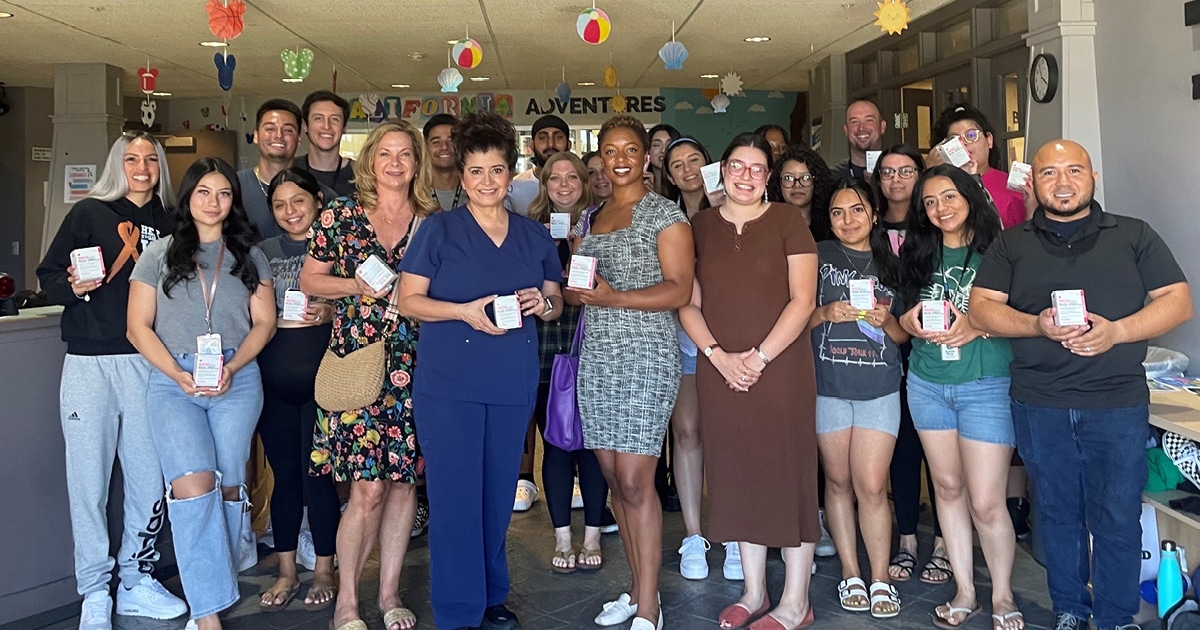California, like many other states, is grappling with a growing fentanyl crisis. Fentanyl, a synthetic opioid, is responsible for a surge in overdose deaths in recent years. Understanding the fentanyl crisis and the crucial role dentists play in addressing it can protect your patients and the community and help mitigate the danger of the opioid epidemic.
Understanding the fentanyl crisis
Fentanyl is a highly potent opioid, estimated to be 50-100 times more powerful than morphine. It’s often mixed with other drugs like heroin, cocaine or counterfeit prescription pills, making it even more dangerous. The result is an escalating number of overdose deaths in California and across the nation. More than 100,000 people in the U.S. die of overdoses each year, with most of those overdoses caused by fentanyl.
The role of naloxone
Naloxone, the key ingredient in Narcan, is a life-saving medication that can reverse opioid overdoses when administered promptly. It works by binding to the same receptors in the brain that opioids target, effectively reversing their effects and restoring normal breathing.
In 2015, the FDA’s approval of Narcan, a nasal spray form of naloxone, made the medication easier to administer. As the use of Narcan has become more widespread, overdose deaths have plateaued since 2021. Until recently, however, access to Narcan was limited without a prescription.
Demonstrating a policy shift toward harm reduction in the war against drugs, the FDA approved two naloxone nasal sprays for over-the-counter distribution in July. Narcan and ReVive can now be purchased in drug stores, convenience stores, grocery stores and gas stations.
While efforts to make naloxone more accessible are laudable, accessibility is just one element of managing the opioid/fentanyl crises. Experts, including the National Institutes of Health, recommend a layered approach that will reduce access to dangerous drugs, keep people who have overdosed alive and get those struggling with substance abuse into treatment. Dentists are well positioned to be part of this effort.
Prescription management and naloxone training
Recognizing the important role dentists play in decreasing opioid use, the Dental Board of California now requires dentists to successfully complete 2 units of C.E. on opioid prescribing as a condition to renew their license. The requirement went into effect Jan. 1, 2023.
In partnership with CDA, the Western University of Health Sciences created the online course "Responsibilities and Requirements for Prescribing Controlled Substances (Schedule II Opioid Drugs)" to satisfy this new C.E. requirement for license renewal. The course is eligible for 2 units of C.E. A recent article in the Journal of the California Dental Association highlights the benefits of naloxone as part of harm-reduction strategies to improve health outcomes for patients who are experiencing or at risk for substance abuse disorder.
Along with understanding how to prevent and recognize opioid overdose, dentists and their staff can choose to receive training on how to administer naloxone. This knowledge can be invaluable in responding to overdose emergencies. The California Department of Public Health offers training resources such as videos and webinars as well as information about the CDC’s naloxone training module for health care providers, which qualifies for C.E.
Community outreach and naloxone distribution
Dentists can also take an active role in community outreach efforts to raise awareness about the fentanyl crisis. Start by educating patients about the risks associated with opioid use and the importance of naloxone availability. You can also collaborate with local health authorities to make naloxone more accessible to vulnerable communities by providing naloxone kits or referring patients to resources where the kits can be obtained.
Donna K. Klauser, DDS, a CDA member, founded a nonprofit organization with a mission to ensure that naloxone is accessible to everyone. “My original concept for my nonprofit, CHANGETHERX, was to provide awareness about the opioid crisis,” Dr. Klauser said. She experienced opioid dependance after a difficult surgery 21 years ago and has been dismayed to discover how many addictions begin when patients are prescribed opioids after dental procedures.
Noting the nonprofit’s evolution, Klauser explains, “We now focus on fentanyl because since the pandemic, many of our young people sought relief from anxiety, depression and boredom during isolation by purchasing online medications, not knowing that this medication is dangerously tainted with illicit fentanyl.” Currently, CHANGETHERX is partnering with local government representatives to look for trusted partners in the community to dispense Narcan at no cost and monitor naloxone use outcomes. “We are starting in Southern California and have plans to distribute Narcan throughout California,” says Klauser.
The fentanyl crisis is a public health emergency that requires a collective effort to combat. California dentists can make a significant impact by taking steps to prevent opioid misuse, educating their communities and supporting the distribution of naloxone. By working together, we can save lives and mitigate the devastating effects of the fentanyl crisis.

